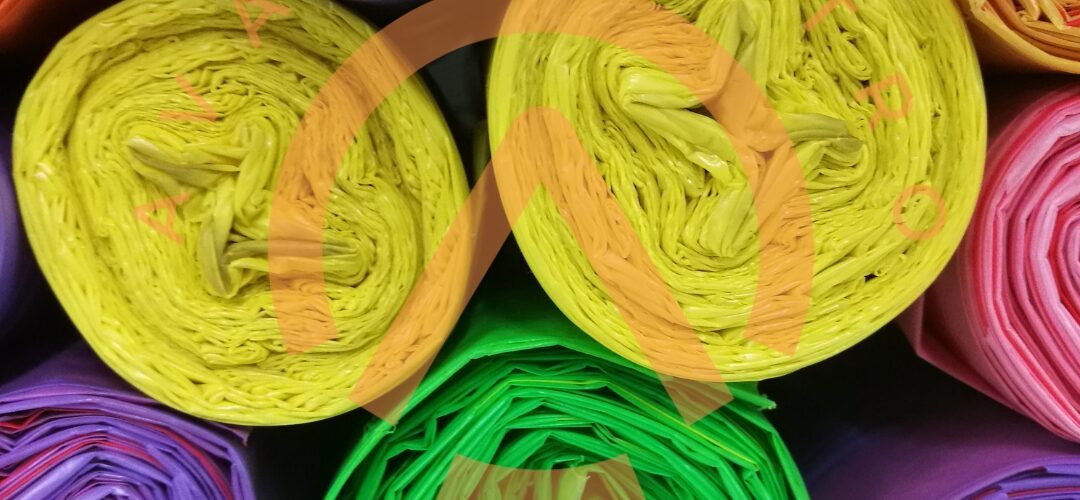What is the Effect of Calcium Carbonate as Mineral Filler on PE Films?
Introduction
When it comes to manufacturing polyethylene (PE) films, the use of mineral fillers has become a common practice. Among various mineral fillers, calcium carbonate stands out as one of the most widely used and effective options. In this comprehensive article, we will delve into the effect of calcium carbonate as a mineral filler on PE films. We’ll explore how it enhances the film’s properties, its impact on mechanical and thermal characteristics, and the potential drawbacks associated with its use. Get ready to gain valuable insights into the world of PE films and calcium carbonate fillers.
What is the Effect of Calcium Carbonate as Mineral Filler on PE Films?
PE Films and Their Applications
Polyethylene films are versatile materials with a broad range of applications across various industries. From food packaging to agricultural films and medical applications, PE films have proved their mettle. They offer excellent flexibility, moisture resistance, and ease of processing. However, incorporating calcium carbonate as a mineral filler can take these films to a whole new level.
The Advantages of Using Calcium Carbonate as a Mineral Filler
Calcium carbonate brings a myriad of advantages when used as a mineral filler in PE films:
1. Improved Tensile Strength and Stiffness: Calcium carbonate enhances the mechanical properties of PE films, making them more robust and stiff, which is vital for specific applications.
2. Cost-Effectiveness: Calcium carbonate is abundant and cost-effective, making it an attractive choice for manufacturers looking to improve film properties without breaking the bank.
3. Enhanced Barrier Properties: The addition of calcium carbonate improves the barrier properties of PE films, providing better protection against oxygen and moisture, thus extending the shelf life of packaged goods.
4. Reduced Environmental Impact: By incorporating calcium carbonate, manufacturers can reduce the overall consumption of PE resin, leading to a more sustainable and eco-friendly film production process.
5. Improved Printability: Calcium carbonate imparts a smoother surface to PE films, making them more receptive to printing and improving the print quality.
The Influence of Calcium Carbonate on Mechanical Properties
Calcium Carbonate Particle Size and Dispersion
The size and distribution of calcium carbonate particles significantly affect the mechanical properties of PE films. Smaller and well-dispersed particles tend to provide better reinforcement, leading to improved tensile strength and modulus. Conversely, larger particles may lead to reduced mechanical properties and an increase in film haze.
Tensile Strength and Young’s Modulus
The tensile strength of PE films increases with the addition of calcium carbonate. It is especially prominent at lower filler loadings. The Young’s modulus, a measure of the film’s stiffness, also experiences a similar improvement.
Impact Strength and Flexibility
While calcium carbonate can enhance the tensile properties, it may slightly reduce the impact strength and flexibility of PE films. This trade-off should be considered depending on the specific application requirements.
How Calcium Carbonate Affects Thermal Characteristics
Heat Deflection Temperature (HDT)
The heat deflection temperature of PE films improves with the incorporation of calcium carbonate. This enhancement is particularly beneficial for applications requiring better heat resistance, such as in the automotive industry.
Melting and Crystallization Behavior
The presence of calcium carbonate affects the melting and crystallization behavior of PE films. It can delay the onset of crystallization and reduce the overall crystallinity of the film. This can have implications for its optical properties and impact transparency.
Thermal Conductivity
Calcium carbonate enhances the thermal conductivity of PE films, making them better conductors of heat. This property is advantageous in applications where efficient heat transfer is necessary, like in certain packaging solutions.
Potential Drawbacks of Using Calcium Carbonate as a Filler
While calcium carbonate offers numerous benefits, it is essential to consider potential drawbacks:
1. Reduction in Transparency: Higher filler loadings can lead to reduced transparency, which may not be suitable for applications requiring see-through properties.
2. Film Brittleness: At higher filler loadings, PE films may become more brittle, impacting their flexibility and ability to withstand impact.
3. Processing Challenges: The addition of calcium carbonate can affect the processability of PE films, requiring adjustments in the manufacturing process.
4. Optical Properties: The presence of calcium carbonate can cause light scattering, leading to altered optical properties in the film.
FAQs
Q: Can calcium carbonate be used in all types of PE films?
Yes, calcium carbonate is compatible with various types of PE films, including LDPE, LLDPE, and HDPE.
Q: Does calcium carbonate affect the recyclability of PE films?
Incorporating calcium carbonate can impact the recyclability of PE films, especially at higher filler loadings. Proper recycling practices must be considered to minimize potential issues.
Q: Is calcium carbonate FDA approved for food packaging applications?
Yes, calcium carbonate is considered safe for food packaging applications and is FDA approved.
Q: Can calcium carbonate improve the gas barrier properties of PE films?
Yes, calcium carbonate can enhance the gas barrier properties of PE films, making them suitable for perishable goods packaging.
Q: Does the particle size of calcium carbonate affect film properties?
Yes, the particle size and distribution of calcium carbonate significantly influence the mechanical and optical properties of PE films.
Q: Can calcium carbonate replace other mineral fillers in PE films?
In some cases, calcium carbonate can serve as a partial or complete replacement for other mineral fillers, depending on the specific application requirements.
Conclusion
In conclusion, the effect of calcium carbonate as a mineral filler on PE films is substantial and versatile. It brings improvements in mechanical and thermal properties, cost-effectiveness, and enhanced barrier properties. However, it’s essential to strike a balance between the filler loading and the desired film characteristics to avoid potential drawbacks. Manufacturers must carefully consider their application needs and production requirements when incorporating calcium carbonate into PE films.
Understanding the influence of calcium carbonate on PE films empowers manufacturers to optimize their product designs, cater to diverse industries, and make environmentally conscious choices. So, embrace the potential of calcium carbonate as a mineral filler and unlock new possibilities for your PE film applications.

